Serendip is an independent site partnering with faculty at multiple colleges and universities around the world. Happy exploring!
Notes Towards Week 6 (Oct. 4): "Function Follows Form"--Parts I & III with Kaye
Barn Swallows and female choice http://www.pbs.org/wnet/nature/episodes/what-females-want/video-full-episode/5371/
I. Kaye: Coursekeeping
* create a "memory palace": line up alphabetically by first name (without talking or writing) with A towards the screen and Z towards the stairs; form into a circle; Ask who was able to get Judith Butler tickets. Pick one to name up to 4 people sequentially, starting with someone across the circle. The last person named is then "it" and tries to name up to 5 other people sequentially, starting with someone across the circle; the next person tries for 6, 7, 8---Pay attention, there will be a QUIZ when you return from our evening snack.
* today's snacks by essiette and rachelr (thanks!);
up next week are jfwright and venn diagram
* sign in
* Judith Butler lectures? here's the update
(stay tuned for possible video reprise....)
*all your papers available for viewing @
/exchange/courses/pppp/f11/webpaper1
** we'll do some individual/group processing in a moment;
watch for our on-line responses, and/but feel to free, in
the meantime, to comment on one another's work and/
or add further thoughts on your own
Just in case anyone has been too busy to remember--next week is fall break, so we won't be meeting in person. However, sometime in the next two weeks do one posting on our on-line conversation between now and Sun Oct 16 at 8 pm.
When we return--rested, refreshed and relaxed--we will discuss the following readings: It looks like a lot, but each piece is short and perfect for fall break reading on a plane, with a nice warm cup of tea, after waking from a nice long nap....
1. A reader-friendly exploration of the effects of testosterone therapy on humans.
- Andrew Sullivan. The He Hormone. New York Times Magazine. Apr 2, 2000.
2. These next 3 articles include a recent scientific study looking at gender differences and testosterone levels, followed by a short critique of the study and then a response by the original authors:
- Paola Sapienza, Luigi Zingales and Dario Maestripieri. Gender differences in financial risk aversion and career choices are affected by testosterone. Proceedings of the National Academy of Sciences 106, 36 (2009): 15268-15273 (in our password-protected file).
- Daphna Joel and Ricardo Tarrasch. The risk of a wrong conclusion: On testosterone and gender differences in risk aversion and career choices. Proceedings of the National Academy of Sciences 107, 5 (2010): E19 (in our password-protected file).
- Paola Sapienza, Luigi Zingales and Dario Maestripieri. Reply to Joel and Tarrasch: On the relationship between testosterone, gender, financial risk aversion, and career choices. Proceedings of the National Academy of Sciences 107, 5 (2010): E20 (in our password-protected file).
3. A second scientific study that has a more rigorous design.
- Peter A. Bos, David Terburg, and Jack van Honk. Testosterone decreases trust in socially naïve humans. Proceedings of the Natlonal Academy of Sciences 107, 22 (2010): 9991-9995 (in our password-protected file).
4. Returning for another chapter of Evolution's Rainbow
- Joan Roughgarden. Chapter 16: "Disease and Diversity." Evolution’s Rainbow: Diversity, Gender, and Sexuality in Nature and People. Berkeley: University of California Press, 2004. 280-305
5. And ending with personal stories about being "intersex" and suggestions for managing "disorders"
- Growing Up "Intersex," Going on Oprah. Haverford College News Room.
- Shedding Light on Intersex. The Oprah Winfrey Show. September 21, 2007.
- Welcome to Parents. Handbook for Parents. DSD Guidelines. Consortium on the Management of Disorders of Sex Development. Intersex Society of North America. March 25, 2006.
- Erik Parens. “Thinking about Surgically Shaping Children.” Surgically Shaping Children: Technology, Ethics, and the Pursuit of Normality. Johns Hopkins, 2006. xiii-xxx (in our password-protected file).*
today we begin Act II of the course: De/Meaning Sex and Gender
III. Anne: Writing Science
IV. Break
Brahms Variations on a Theme by Paganini, Opus 35
Quiz: Take out a piece of paper and write down everyone's name in order starting with yourself and moving clockwise around the room. Turn them in.
We've all heard claims that homosexuality is unnatural, that butch women are not true women, that real men don't eat quiche...
But what can biologists who study vertebrates offer to counter those assertions? What approaches do they use to determine whether an animal is male/female/hermaphrodite, how frequently animals engage in same sex pairings, whether testosterone is necessary for mating, etc.
Just as many humanists do close readings of texts, many biologists do close readings of nature. One of the key ways that biologists gather evidence about animal behavior is through...
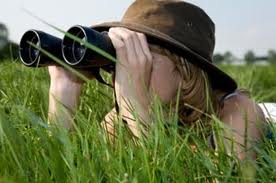
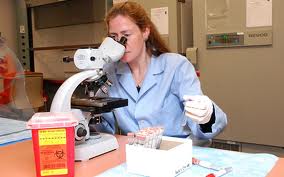
OBSERVATION of vertebrates in their natural environments and in experimental settings
- external (behaviors, feathers, etc.)
- internal (hormones, neuronal activity, etc.)
- qualitative (verbal descriptions, videos, audio recordings, photos, micrographs, etc.)
- quantitative (counting events, measuring amounts,) etc.
Biologists want to understand more than just what happens, but they also want to understand how something happens--what are the mechanisms, the pathways, the networks that lead to a particular structure or function, a particular pattern or behavior. To do this, biologists also use
EXPERIMENTAL INTERVENTION to change something
- in an animal's environment (social, physical)
- in an animal's body (organs, tissues, cells, chemicals)
- add/subtract/rearrange
then they return to....
OBSERVATION and ask did this experimental intervention lead to a change in the animal's behavior or body
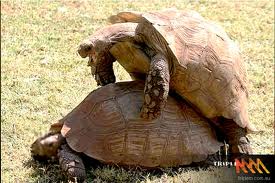
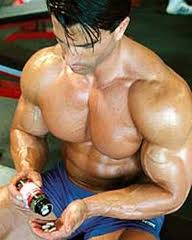
At the end of class, we'll examine an example of an experimental intervention, but first let's talk more about some foundational issues in biology.
UNITY AND DIVERSITY?
p180 in Alcott "another example of the rule that there is no one hormonal mechanism that regulates the sexual behavior of all animals, or even all vertebrates, in exactly the same way."
In groups of 3 (dividing alphabetically), share the example of the diversity of sexual behavior in animals from any of the readings/viewings for today, which you found most striking. What does it illustrate about what is possible in terms of choice, nature/nurture, hormonal effects, abilities, etc.?
Can we find any unity in this diversity? Can we make any productive generalizations supportable by evidence? Or do we always need to preface a scientific finding as Alcott does many, many times in his chapter "as it applies to this species..."
And should that be extended to..."as it applies to this" individual organism in this setting with this history.
Biologists know that there is diversity, and argue that there is UNITY within that diversity because of our shared evolutionary history.
EVOLUTION--what does it mean to biologists?
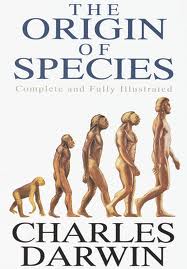
Originally published in 1859 and based on his around-the-world voyage observing patterns of diversity in nature. Darwinian theory provides an important foundation for modern biological thought and states that a new species evolves when there is
- variation within the species, such that members of that species differ in some of their characteristics
- heredity such that parents can pass on these distinctive characteristics to their offspring
- differences in reproductive success, such that individuals with these distinctive characteristics have more surviving offspring than individuals without those characteristics
We now understand that mutations in genes (the DNA sequences that code for proteins) can lead to variation in the colors of feathers, the shape of reproductive organs, the timing of ovulation, the capacity for nurturing young mice and that offspring inherit the genes of their parent(s) and that, depending on the social and physical environmental conditions, certain characteristics lead to more offspring because those parents and their offspring are more fit. This is the crux of natural selection.
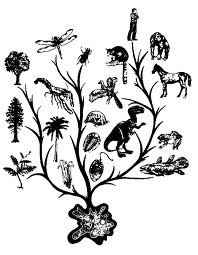
All plants and animals are carbon-based life forms, use ds-DNA as their hereditary material, use ATP as a souce of energy, are made up of cells with semi-permeable membranes that create an inside and an outside, make proteins with similar functions, catalyze similar chemical reactions, use chemicals to communicate, etc. Plants and animals have very similar tool boxes, but they make different structures that interact with each other and their environments in different ways.
Given evolution, we should expect both unity and diversity in vertebrates;
- unity because of heredity and our shared ancestry
- diversity because of mutations and natural selection
When you first asked, "what is sex?" What were you told and by whom?

How did people in your families answer that question? What were you taught in grade school? in middle school? in high school? in Sunday school?
If you had asked a biologist, she would have said that sex means mixing genes when reproducing, not that there are two sexes--male and female
"To a biologist, 'male' means making small gametes, and 'female' means making large gametes. Period!" (Roughgarden, p23)
Roughgarden highlights two important biological generalizations about sex (p26):
- Most species reproduce sexually,
- Among the species that do reproduce sexually, gamete size obeys a near-universal binary between very small (sperm) and large (eggs)...
BINARIES EXIST (at least for gamete size)...
What about hormones??
INTRODUCING testosterone and estrogen:
Figure 5.27 in Alcott
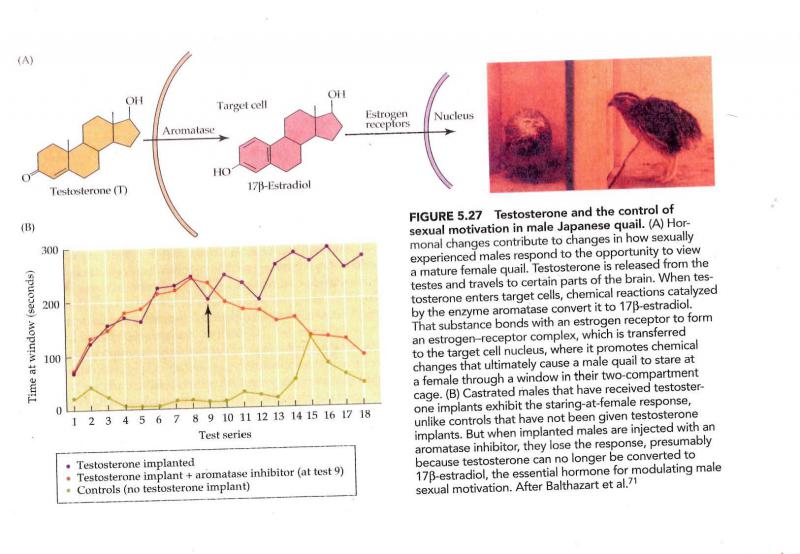
Models of testosterone, estradiol (estrogen), progesterone
Can you discriminate the differences by sight, by touch (like a protein receptor)?
Figure 5.31 in Alcott.
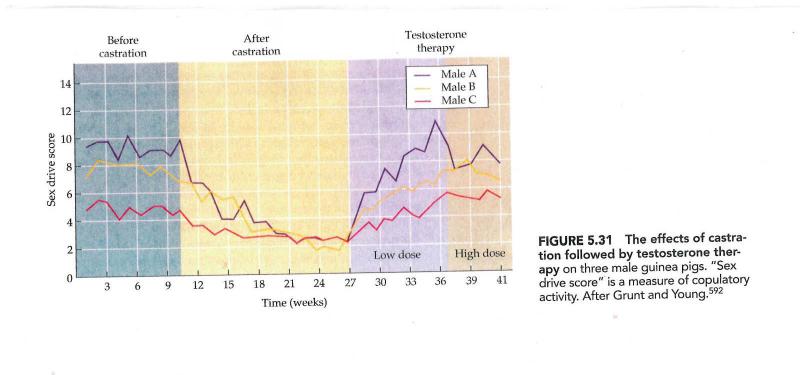
What can you conclude about the role of testes and testosterone on male guinea pig sex drive?
Why do scientists do these kinds of studies?
Of what use are these studies, for those of us studying and practicing gender and sexuality?
Roughgarden, p. 4: I do not argue that because gender and sexuality variation occur in animals, this variation is also good for humans...I do not advocate any version of this fallacy that confuses fact with value....I also do not suggest that peole are directly comparable to animals....We make an error if we attribute too much human quality to animals, but we underestimate them if we think they're mechanical robots. I've tried to strike a balance here.
p. 23: using biological categories as though they were social categories is a mistake called 'essentialism.'
jmorgant: Is rape biological? I was disgusted at the idea that scholars can interpret rape as evolutionary, which to me implies that it is innate, unchangeable, and rational. The authors acknowledged this viewpoint, but explained its “naturalistic fallacy:” “the error of deriving what ought to be from what is.” Despite my attempts to think rationally about rape from an evolutionary perspective, I’m having a lot of difficulty.
Come back in two weeks for more discussion....


